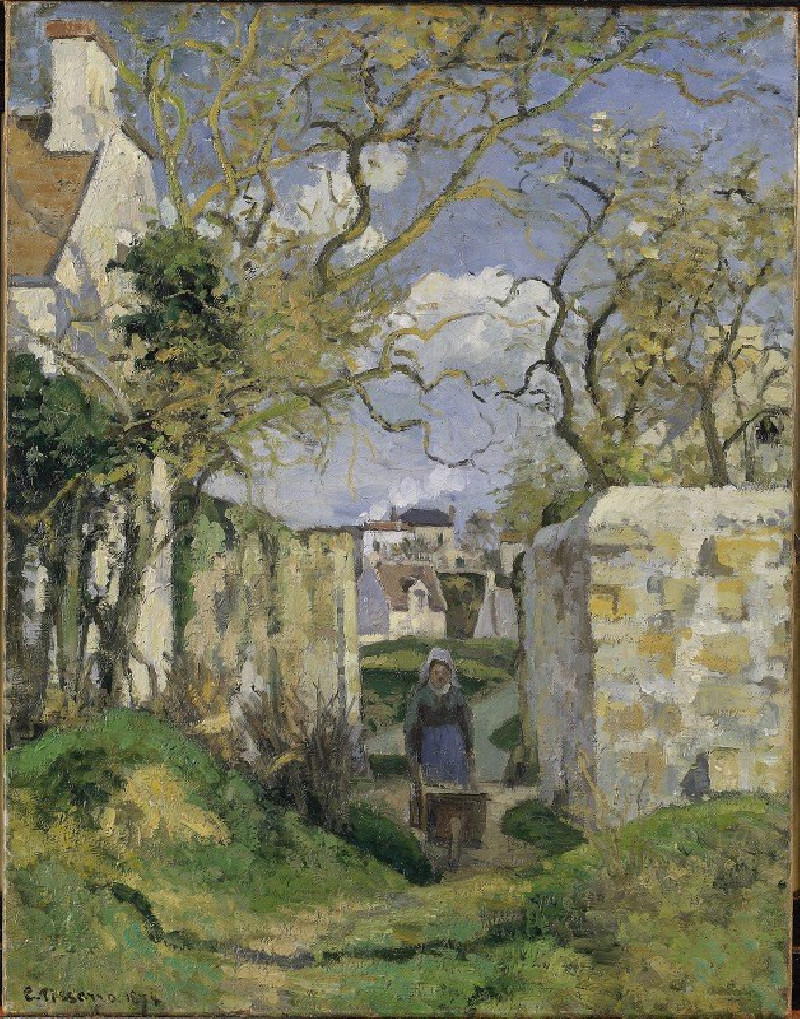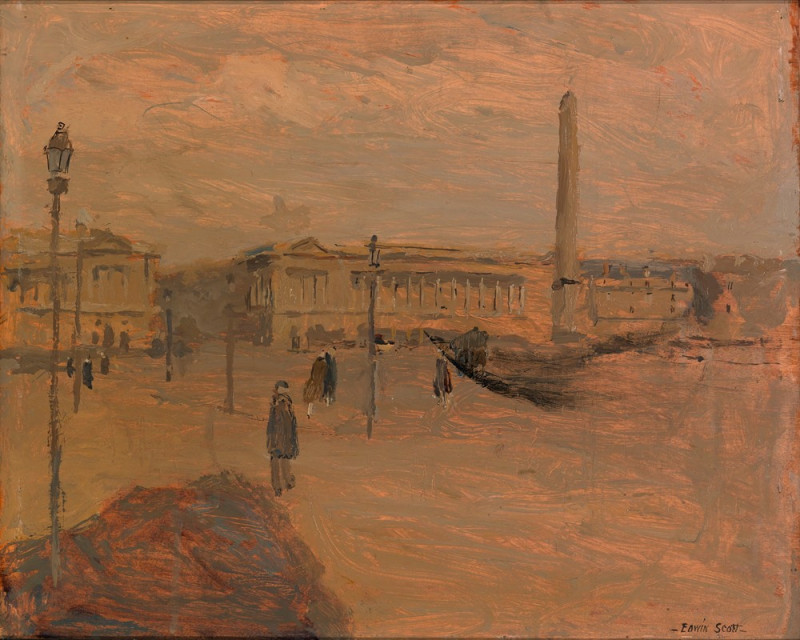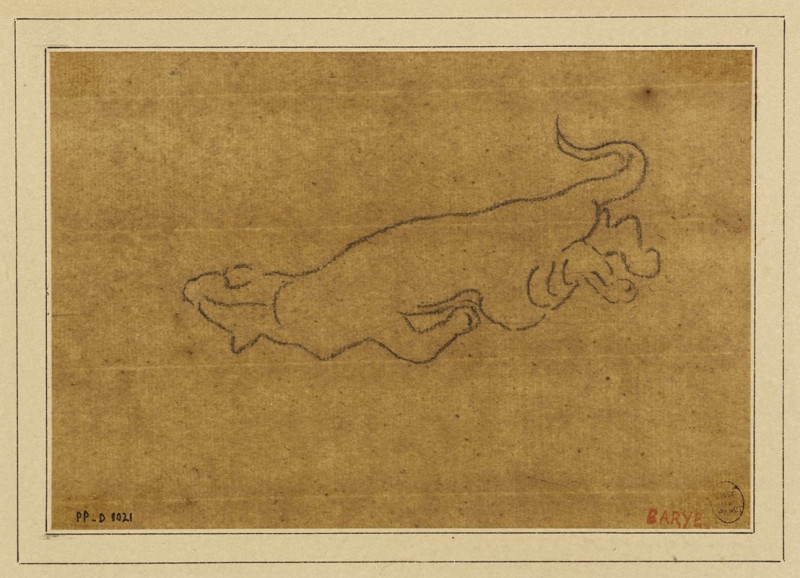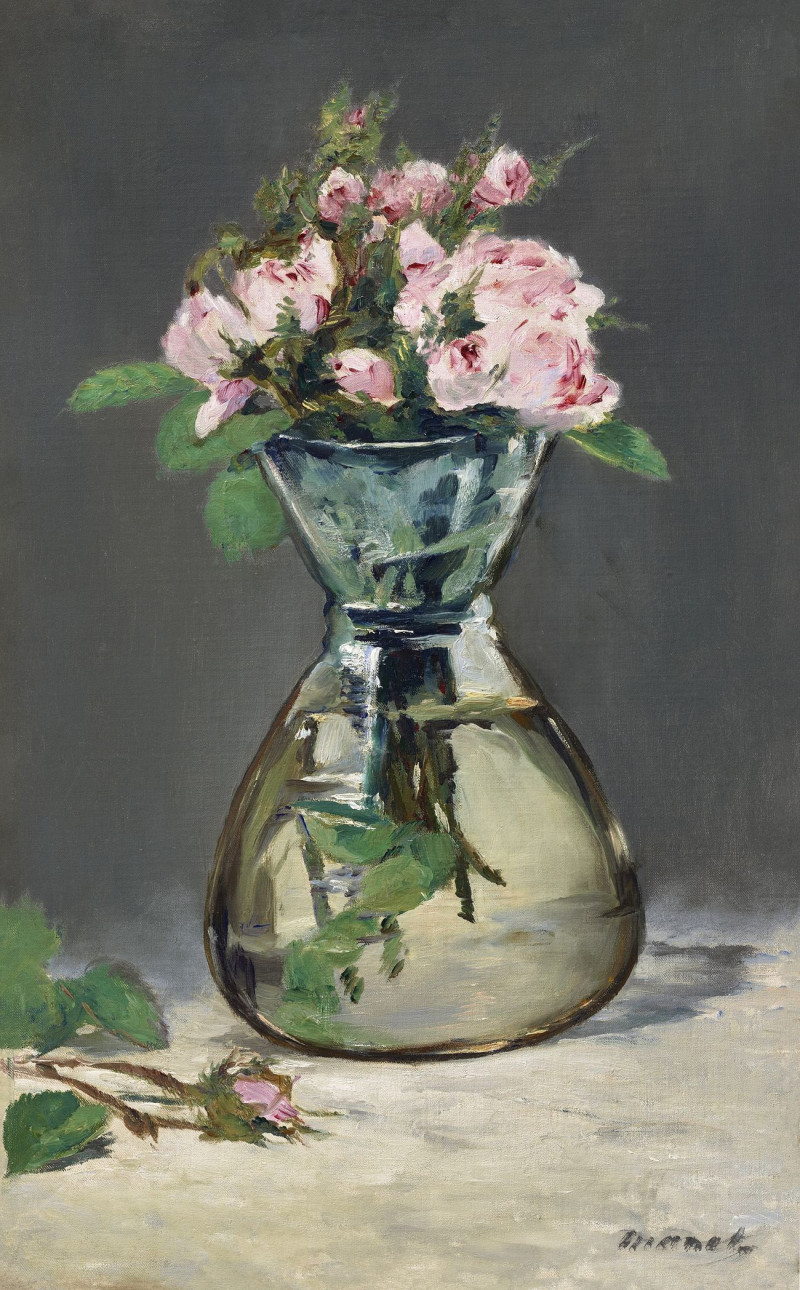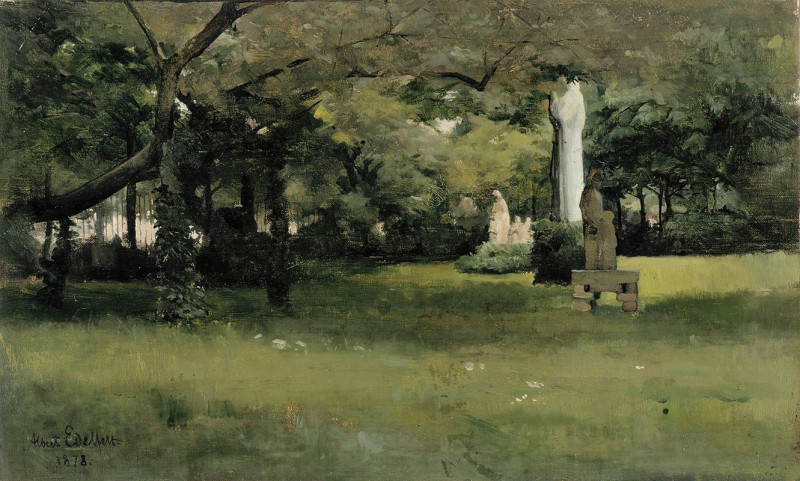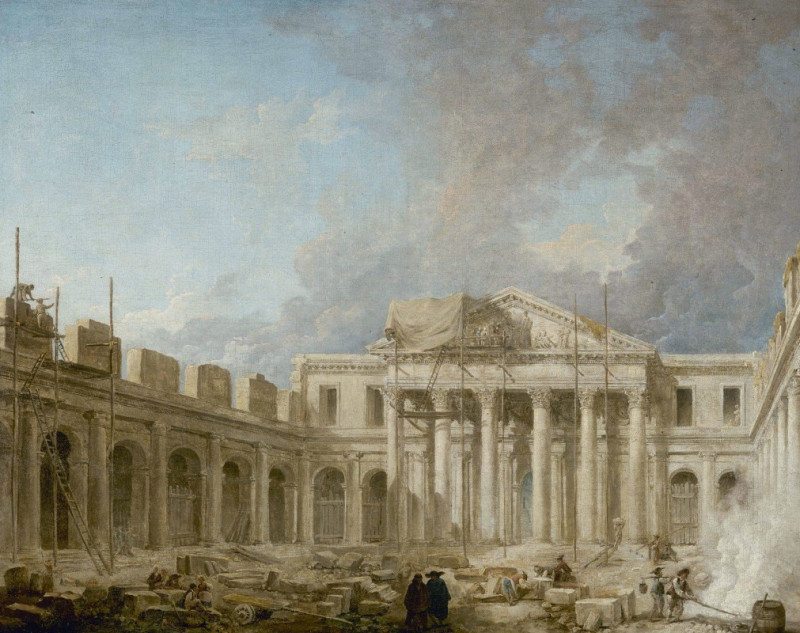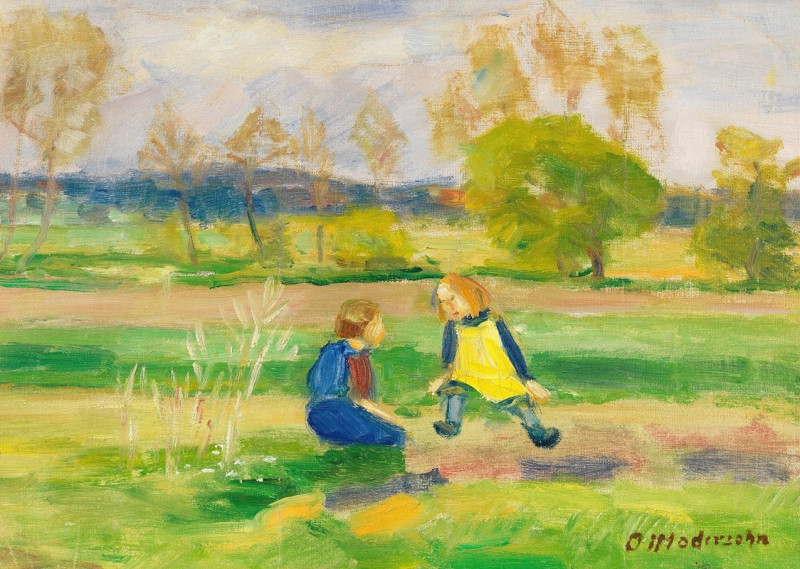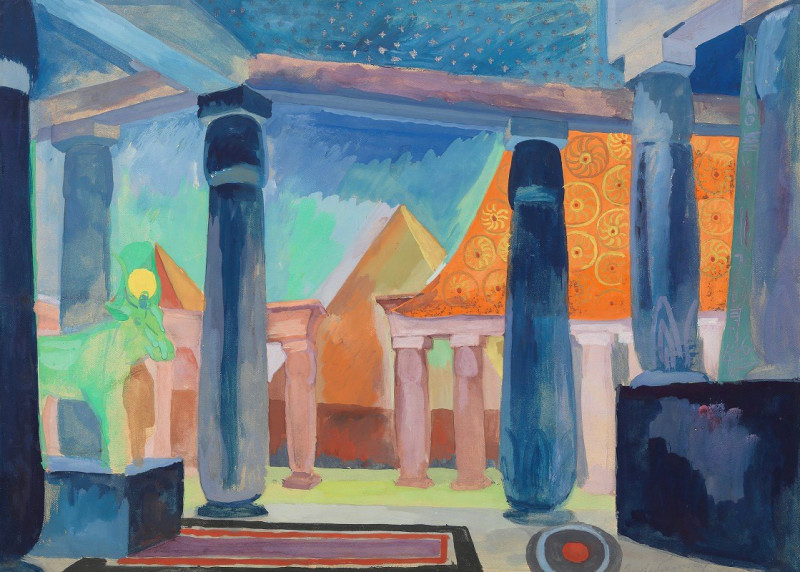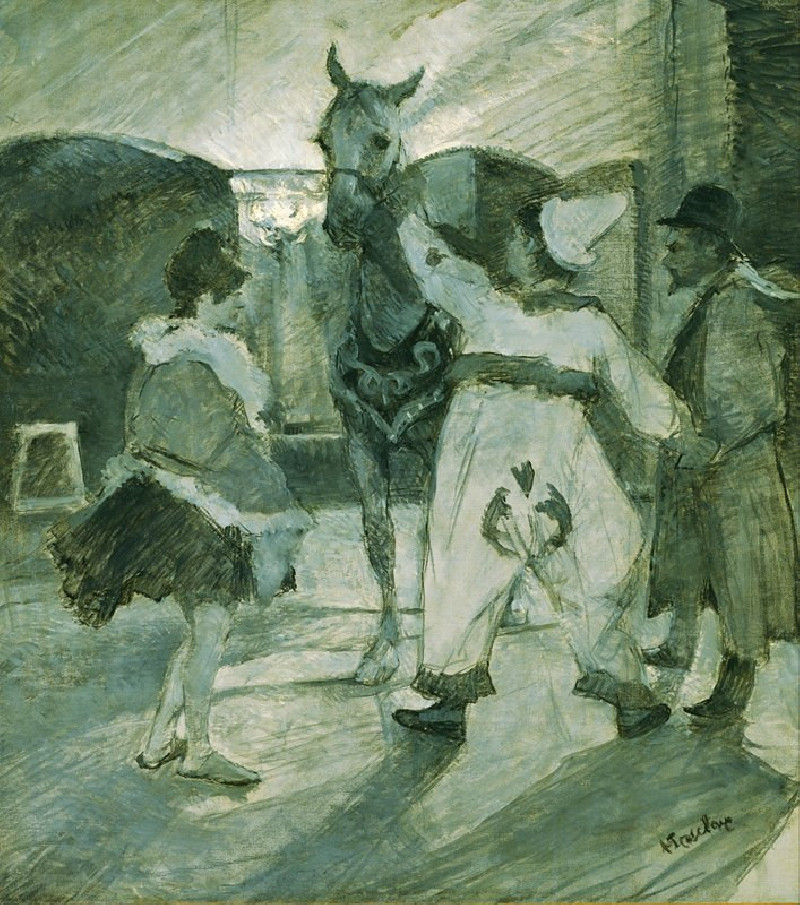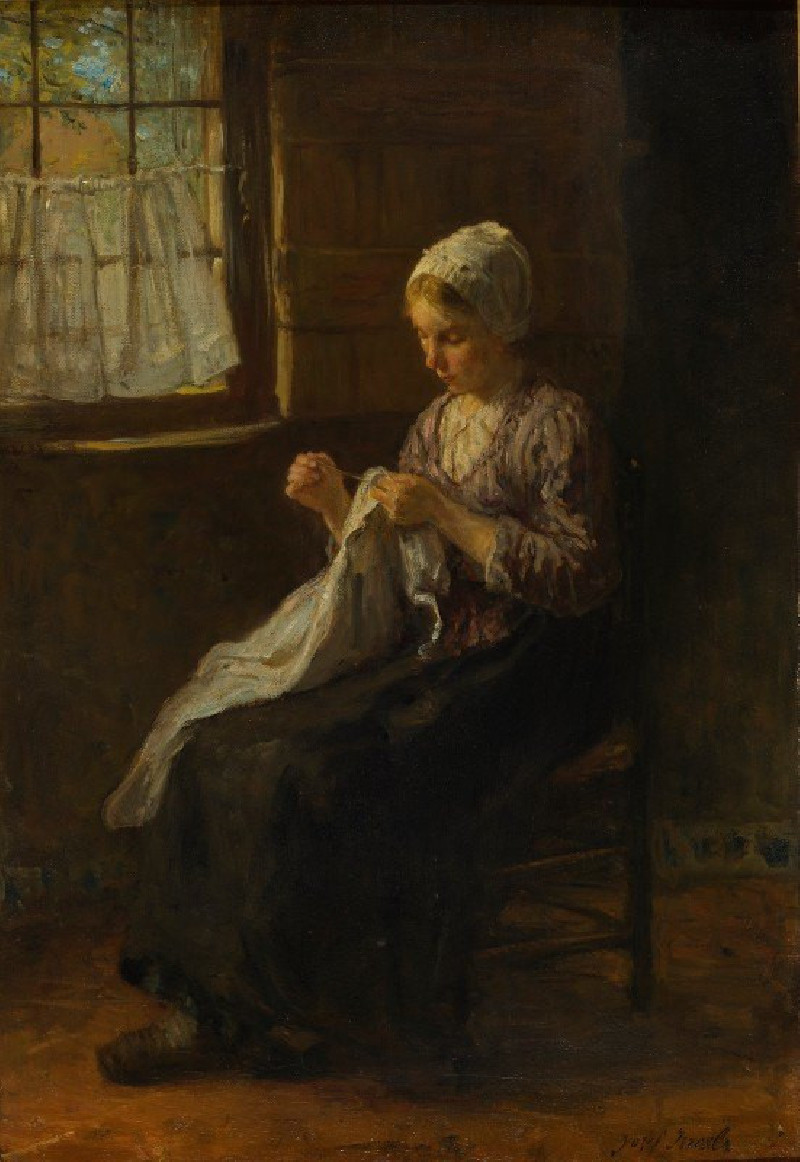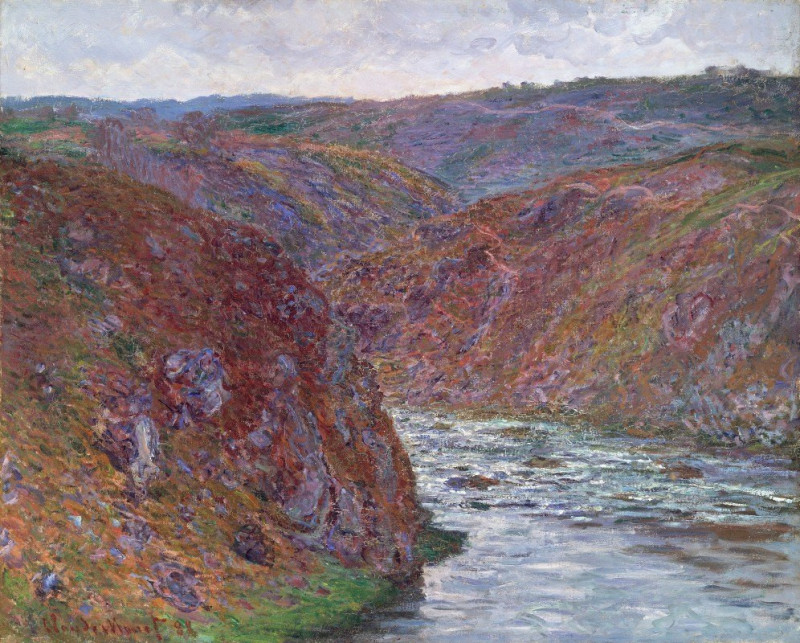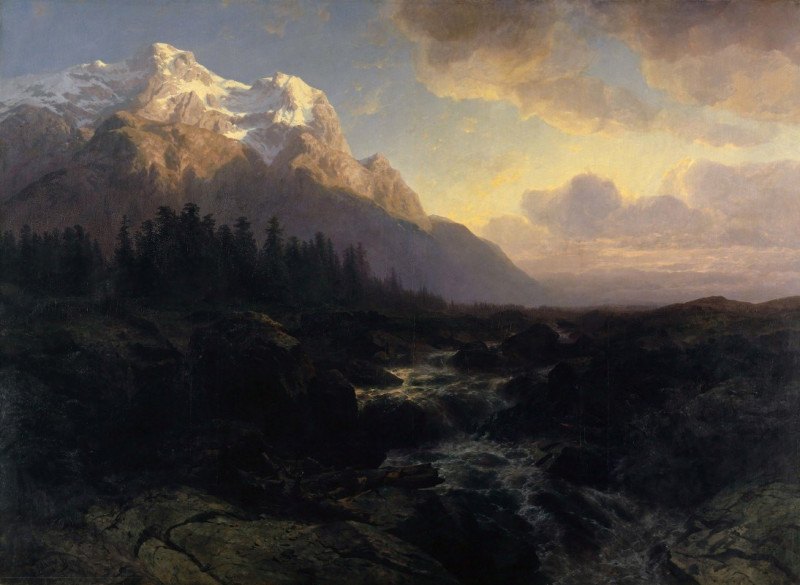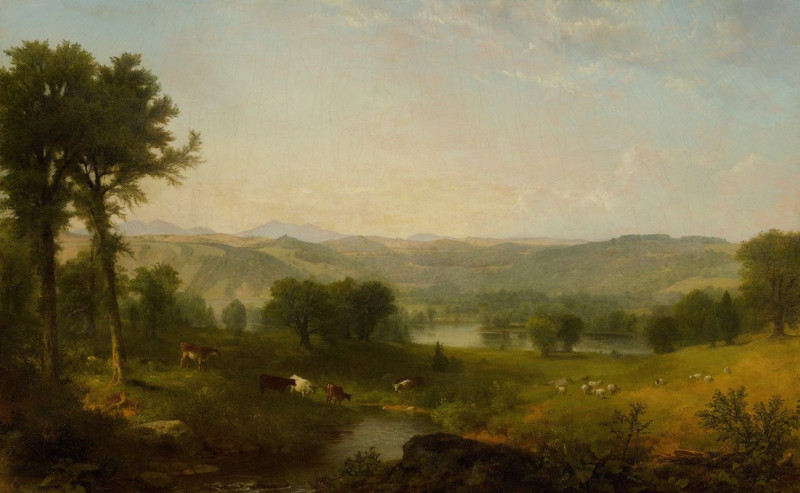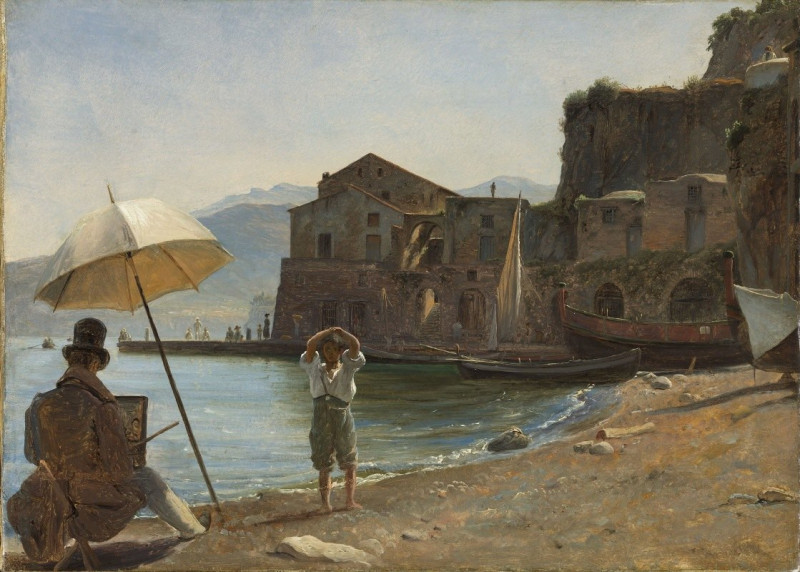Landscape from Pontoise (1874)
Technique: Giclée quality print
Recommended by our customers
More about this artwork
"Landscape from Pontoise" (1874) is a captivating painting by the esteemed Impressionist artist Camille Pissarro. This vibrant work of art captures a serene, rural setting in the village of Pontoise, where Pissarro lived and worked during several periods of his life. The scene depicts a peaceful, narrow pathway lined with lush vegetation and traditional stone walls.Central to the composition is the figure of an elder woman, likely a local villager, who gently makes her way along the path, pushing a wheelbarrow before her. This figure adds a human element to the landscape, creating a narrative that invites viewers to ponder the daily activities and rhythms of rural life.Above, the sinuous branches of barren trees stretch across the canvas, intertwining with patches of blue sky and soft white clouds, beautifully conveying the intricate patterns of nature. The painterly technique used by Pissarro brings a dynamic texture to the foliage, walls, and pathway, enhancing the overall sense of vibrancy and light.The painting is emblematic of Pissarro's style, characterized by its loose brushwork, attention to the effects of light, and deep commitment to depicting rural landscapes and agricultural scenes. "Landscape from Pontoise" not only offers a glimpse into the natural environment of the French countryside but also reflects the transformative art movement of Impressionism, which celebrated everyday life and the changing qualities of light.
Delivery
Returns
Blessed are they who see beautiful things in humble places where other people see nothing. — Camille Pissarro
Camille Pissarro (1830-1903) was born on St.Thomas (now the US Virgin Islands) to a Portuguese father and a Dominican mother. He went to Paris to study art at Ecole des Beaux-Arts. He was an early pioneer of pointillism and neo-impressionism and later became a mentor of many famous impressionist painters including Cezanne, Manet, Renoir, and Gauguin. His paintings depicted rural and urban French landscapes and lifestyle. Many of his works politically captured images of peasants and laborers. Today, he is considered the father of impressionism.

